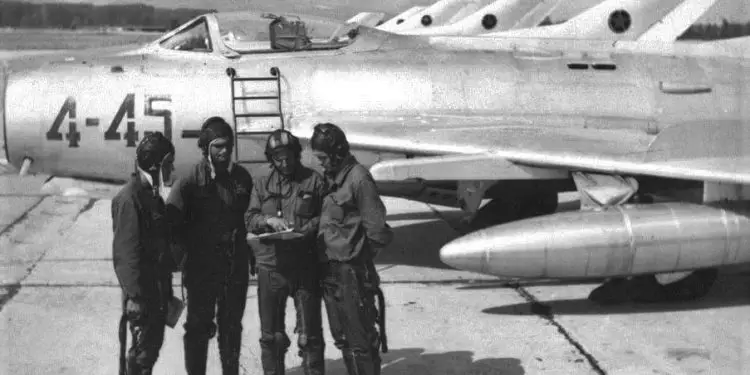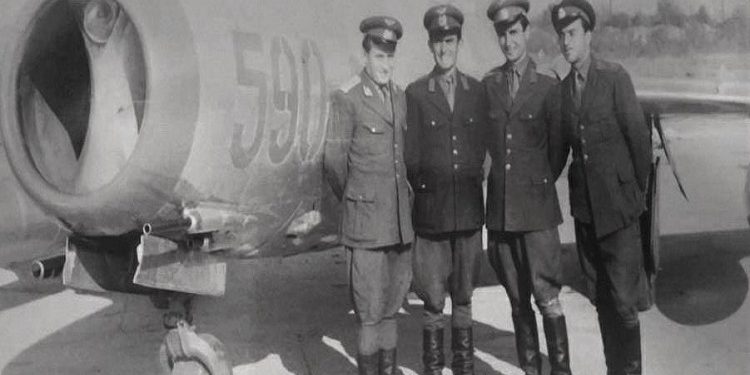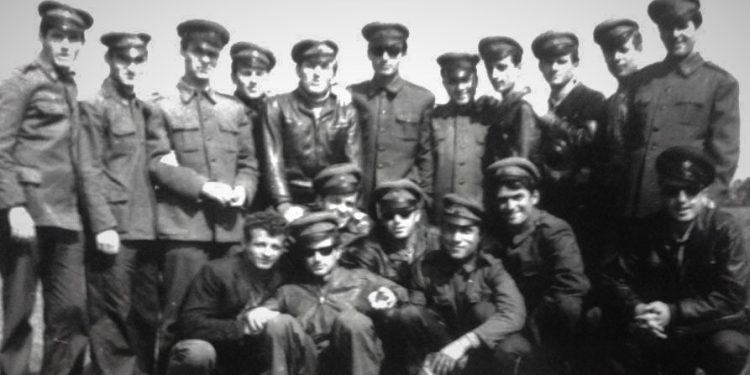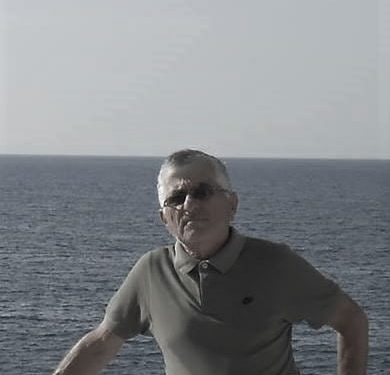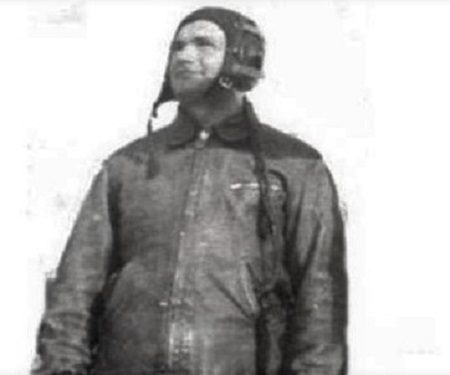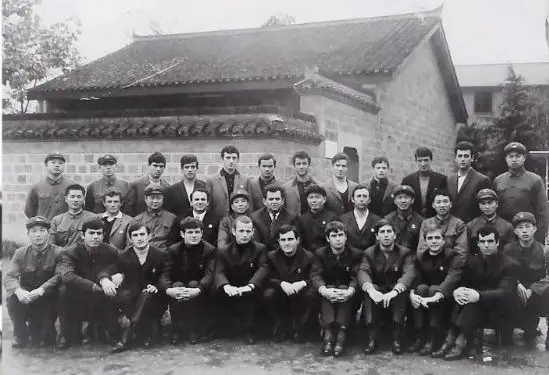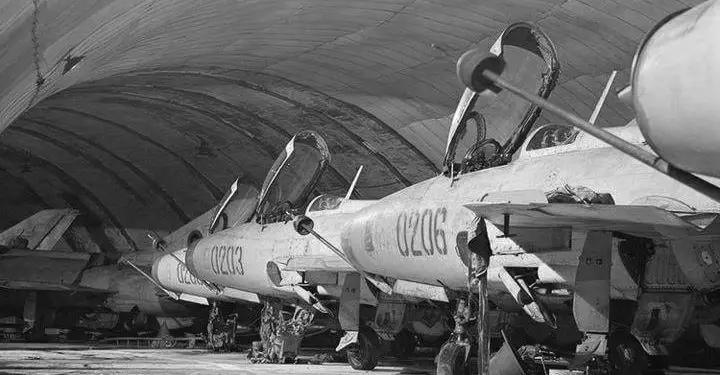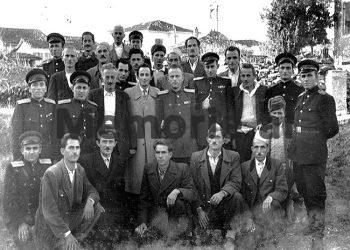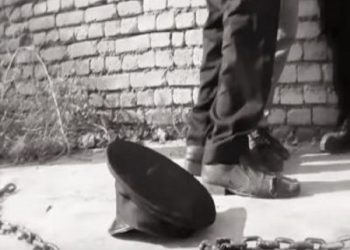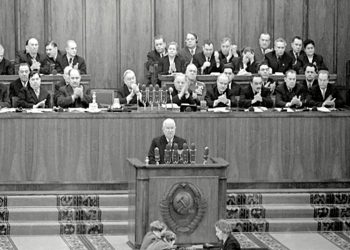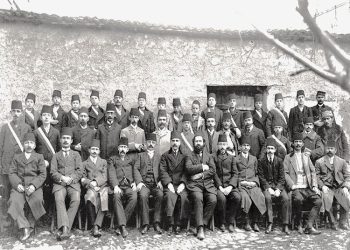By Nizai Nelaj
Part eight
– At the Chinese Military Aviation School –
Memorie.al / Expelled from the Soviet School of Aviation, with dreams cut in half, part of the group of student pilots, who had studied for a year in the city of Bataysk, on January 8, 1962, after a “hell” cruise ”, with a cargo ship, we arrived at the center of China’s Third Military Aviation School in Chin Zhou City. It is located in the “heart” of Manchuria; at that time there were about 200,000 inhabitants. Without any prominent industry. A city with 2-3 story buildings but paved roads. The terrain around the city was plain; next to it are the Western shores of the Yellow Sea. One of the values of this city was the fact that it was the center of China’s Third Military Aviation School. My going to this school and that city was a lucky chance. In the list of 7 students of our course, which included: Adem Çeça, Dhori Zhezha, Mihal Pano, Bashkim Agolli, Andrea Toli and Sherif Hajnaj (Bracki), my name, Niazi Nelaj, was included, quite by chance.
Continues from last issue
The student placed the plane in the middle of the take-off strip, and after receiving permission from the air traffic controller, revved the engine up to maximum. The plane surged forward, building up to takeoff speed. When the speed on the instrument reached 80 km/h, the student, according to the instruction, to help speed up the separation of the plane from the ground, he placed the steering handle forward, an action that causes the rear wheel to separate from the ground and then the plane leaves the ground.
However, the thumb of the right hand, which performs this action, was stuck on the parachute belt that the student was wearing, and therefore, the action was not performed. The student reported on the radio and decided to abort the takeoff, taking care to reduce the engine power and reduce the speed of the aircraft. The analysis clarified that the student was at fault; which was given supplementary flights, with the instructor in the second cabin.
Of the flights without any particular desire which did not bring me pleasure I remember one aspect when I was piloting, in the area, with my instructor, the Chinese Ma. On the plan of that day was the recall of one of the most difficult figures of piloting in the vertical plane, which, in technical language, is named perevorot, which means overturning. At an altitude of 1500 m., when the aircraft was flying in a straight line at a speed of 150 km/h, raise the nose of the aircraft 15-25 degrees, above the horizon and with a quick, diagonal movement of the steering handle, accompanied by pressing hard of the pedal on the desired side of the aircraft inversion.
When the aircraft was inverted and in the wheels-up position, you had to pull the control handle to bring the aircraft into a deep dive. The instructor, as we had already discussed on the ground, allowed me to complete the picture. I flipped the plane upside down, its nose falling below the horizon. I repeated it, several times; i got the same thing. The instructor showed me. I repeated; it didn’t work for me.
” The patient horse ” was annoyed with the internal radio, to show himself as close to me as possible, to calm me down, he said to me, half in Chinese, half in a strange Albanian: “One breast do this and that”! Niazi could not say the word, because in his language, there is no such hieroglyph.
We started the flight program, in the ‘Jak-18 U’, in the spring of 1962 and finished it in the summer. Our comrades, from the other squadron, were still flying at Liu Shi Bao. The school leaders asked us: Do you want to go on vacation, to Tallinn (Dalnij), a seaport near the Korean peninsula, or start the theoretical program to switch to the Mig-15 Bis jet aircraft?
We, bored by that repetition of the program, on the propeller plane, with the aim of finishing school as soon as possible and returning to the Motherland, unanimously expressed that we want to start the new program. We lost our holidays and we didn’t win anything.
In the middle of the summer of 1962, we moved to a small town in Liaoning Province, which is called Sui Xun and is located on the West coast of the Yellow Sea. The aerodrome had a concrete runway, direction: North-West; South-East. The dimensions of its concrete belt were 2,500 X 60 m. The dimensions of the aerodrome and its position were suitable for the development of flights with students, in the jet plane “Mig-15 Bis”.
The city of Suj Xun looked more like a large provincial village built on the steppe. It was chosen to fly to that aerodrome, based on the advantages that were highlighted somewhere in the introduction of this article. We were placed in a military garrison, in living conditions similar to those we experienced in Liu Shi Bao.
We started with a short theoretical preparation which lasted about 3 months. We learned the features of piloting with the jet plane ‘Mig – 15 Bis’ and its training variant ‘UTI- Mig 15’. The level of teaching and the requirement to master every detail was present at every step. Even in this case, the teachers “didn’t forgive”. We felt at a higher level of qualification; we would fly a faster plane, at a higher altitude; with much longer flight autonomy (as distance) and the new aircraft was armed; with three balls (2 X 23 m/m. and 1 other 1 X 37 m/m.).
We became more serious and felt more competent. I don’t think we sold, since we were only at the beginning of the acquisition of the combat aircraft. We got “seriously” into learning the features of using this serious aircraft. The instructors of piloting technique, as well as the lecturers of the theoretical process, were among the best that Chinese aviation had. We were led by pilots, some of whom had participated in air combat in the Korean War.
Before starting the flights, we underwent a medical test. Our friend Mihal Pano, from Tirana, declared him unable to fly in jet planes even though he had flown in two types of propeller planes. He was separated from us. At the end of the flight program in ‘Jak-18 U’, my closest friend – Sherif Çelo Hajnaj (Bracki), who had the highest frequency than recommended for a pilot, was declared disabled.
He and two students of the Sturman group: Enver Muça and Flamur Dedei, were granted the right to study to become Chinese language translators at Peking University. Mihali was not allowed to fly in jet planes because the flight instructors did not undertake to teach him aerial practice. He continued to stay with us, in Sui Xun, outside of the flight groups. Five students remained: Andrea Petro Toli, Bashkim Salih Agolli, Adem Çeça, Dhori Nasi Zhezha and Niazi Xhevit Nelaj.
We were divided into two subgroups. In one was me, Dhori and Adam; in the other were Andrea and Bashkimi, whom we called “Nipçe”. The instructor of the group I was a part of was the elderly bachelor, the short, thin Chinese, agile as a squirrel and strong – Liu Shë Mo. We all slept on the second floor of a two-story tower in the center of Sui Xun’s military garrison.
As is the norm in aviation, to communicate via radio with our comrades in the air and on the ground, in order to maintain secrecy, instead of actual names, we used indexes (numbers). This rule was also in the Soviet Union. Our group of 5 students had these indexes:
Adem Çeça held the index – 71; said in Chinese it was Kue-I; Kue, that is – seven; means one. Together they read 71.
Andrea Toli, carried the index-72, which reads ‘kue ljang’, which means seventy-two.
Dhori Zhezha carried the index 78, which is read ‘kue pa’, which means seventy eight.
Bashkim Agolli, carried the index 73, which is read ‘kue san’, which means seventy three.
Niazi Nelaj carried the index 74, which is read ‘kue se’, which means seventy-four.
There was something to note in this matter; Numbers in Chinese are not the same, both in the military and in civilian life. For example, counting from one to ten, in general language we have the count: i; gold; hay; of; u; play what; without, knee, shoulder; – in the military language we have: jao, ljang, sang, se, u, lju, kue, pa, go, shë. So some are not the same thing. We, as soldiers, respected the military language in communication.
The airfield of Sui Xun was equipped with radio technical means of the time, which ensured the detection of aerial objects and the direction of radio communication, at the distances where the Mig-15 jet planes were flying. Since the altitude of the flights was greater, the radio communication, detection and direction of the planes also had a greater scope. Our orientation from the air with the terrain was facilitated by the coastline that ran close to the flight region and the many rivers that traversed that lowland. Very close to the airfield was a small island, named San Hae Guan. The locals told us an interesting legend related to the history of this island. Below I bring that legend, as I was told at the time.
The Legend of San Hae Guan Island
The island bears the name of a teenage girl, quite beautiful, who became a butcher to save the population of the island from the dangers of time. In ancient times, since time immemorial, the Han dynasty ruled harshly in Manchuria; one of the most powerful and longest-lived dynasties of ancient China. At the head of the dynasty was a handsome and powerful prince who ruled with a strong hand. He, like any man, had a hobby of flirting with some beautiful women. His favorites were teenage girls.
The prince, who was called “Huansha” in the local language, used to send “brave” kissers to the provinces under his control to spot beautiful girls. After identifying them, he invited them, with flattery, promises and tricks and with precious gifts – to his palace. Some girls were lied to by the promise that the prince would marry them. He kept them in the yard and used them for a while and then replaced them with other, newer and always beautiful ones. The prince’s dreams fell on the trail of the little girl Li (plum), who was quite beautiful and very clever.
She, in addition to her beautiful face and body, also had a rich inner world and a generous spirit. Envoys of Prince Katil came into contact with the beautiful little girl Li and proposed that she become the rich prince’s wife. They promised him all the good things in the world and assured him that he would step on jewels and “swim” in wealth. The prince’s messengers made the proposal to the girl and took the road to go to the one who had sent them. They would report to the employer about what they had achieved and to receive the reward for the work they had done. Meanwhile, the answer of the beautiful girl was awaited in the palace.
Little Li wasn’t just good looking; she was also noted for a natural wit. He welcomed the prince’s envoys and feasted them on what happened to them. They satisfied by the reception they found and by the girl’s promise that she agreed to go to the prince’s palace, “fell into a trap” and quickly brought the good news to the palace. The teenage girl Li had heard that the prince was treacherous and unfaithful; he didn’t keep his word and he had a bad heart. Therefore, he asked the envoys to sign, on behalf of the prince, a type of agreement.
The beautiful Li set two conditions for the negotiators, who should convey to the prince. The first condition had to do with the many taxes the islanders paid. They, even to go down to the shore, had to pay a tax to the prince, in addition to other taxes. The prince, if he wanted to have the beautiful Li in his palace, should reduce the taxes of the island’s population.
The second condition was: The prince, during his reign, should build a high wall, which would prevent the penetration of the Mongol hordes, which from time to time flocked to the spaces of the province of Liao Ning and to the island of San Hae Guan, where they robbery of goods and women as well as monstrous massacres. The population of the island suffered great damage from the robberies, murders and rapes carried out by the Mongol armies.
According to the mouthpiece, the haughty prince accepted both conditions and the wedding day was set. The beautiful Li prepared to go to the prince’s palace, dressed as a bride, in white, and waited for the princes who would come to pick her up. She rode on a raised place from where the road from which the Krushiks would come could be seen.
As soon as she saw the grand suite of the prince’s delivery, the beautiful Li jumped into the water from a high cliff where she was sitting by the sea and disappeared into its turbulent waters. The people who had gathered to celebrate and the prince’s envoys saw floating on the waves, little Li’s white veil and a wreath of fresh flowers, which her peers had woven for her.
From that day the island took the name of the beautiful little girl who sacrificed herself for her people. It was the inhabitants of this country who baptized the island with the name of their little girl, whom they considered their “guardian angel”.
Let’s go back to our issue of preparing to fly MiG-15 jets and the organization and development of flights. We conducted theoretical training and flight practice at Sui Xun Air Base. The Chinese had learned to fly from the Soviets. From Soviet aviator advisors and instructors, they had learned how to pilot, the science of flying and the technique that made it happen.
Even in the Chinese aircraft manufacturing plants, in Shen Jan (Mukden), which was built on the basis of the Japanese aviation industry, the first Chinese aircraft manufacturing plant started the production of airplanes on June 29, 1951. According to following Chinese practice, the ‘Mig-15’ aircraft it produced were called the ‘Jian Jao-2’ or ‘J.J. -2’.
At the time we went to learn to fly, the Chinese air force had many Mig-15 Bis aircraft, donated by the Soviet Union, and many others, produced in evendit factories. The ‘Mig-15 Bis’ plane was the basis of the fighter-bomber aviation of the Chinese aviation. The Mig-17 aircraft was also in the arsenal, in three variants; Simple ‘Mig-17’; ‘Mig-17 F’ and ‘Mig-17 PF’. They had in their arsenal two other types of shooters: ‘Mig 19’ and ‘Mig 21’; which they kept secret.
The Chinese aircraft constructors, with extraordinary efforts, had managed to combine the best characteristics of the fighter-bomber aircraft of the Soviet air fleet with those of the best American aircraft of this type and had produced a type of “hybrid” aircraft. I was not lucky enough to see this type of aircraft up close, which even the Chinese pilots of the base, who were selected among the best, had not seen.
I had only seen it when it was flying over our airbase, at high altitude. He could see only the trailing plume of white smoke and the silhouette of his tall body; with delta wings. The Chinese are fantastic at keeping secrets. Generally nothing comes out of their mouths; when it comes to military matters, they keep their mouths shut.
We were preparing to launch flights on Mig-15 jets. Here are some tactical-technical and flying data of the Mig-15 Bis aircraft:
The frontal jet fighter-bomber, with one engine, was produced, for the first time, at plant No. 1 of Soviet airplanes, in Moscow, (which bore the name of Joseph Visarionovich Stalin), in 1948. Such a factory was also built in the city of Novosibirsk. Initially, for the needs of the Soviet Aviation, 13,131 ‘Mig-15’ planes were produced. With all orders from other socialist countries, 15,560 ‘Mig-15’ aircraft were produced.
In the 1950s and 1960s, the ‘Mig 15 Bis’ aircraft was the most widespread fighter in the world. More than 40 armies of different countries had put it into service; in Europe; in Arab countries, in Africa, and even in the American continent. The initial destination of the ‘Mig-15 Bis’ aircraft was to engage in active aerial combat with enemy fighter and bomber aircraft; neutralization of enemy aviation actions; striking ground targets, performing aerial reconnaissance tasks and controlling combat operations on the battlefield. Memorie.al
The next issue follows




